GBP/USD
Explore how to trade GBPUSD and what affects this forex pair. Use GBPUSD live charts to build your own analysis, check GBPUSD forecasts for insights, study historical data to understand how GBPUSD prices move in the forex market and review common questions from other GBPUSD traders to enhance your strategy.
GBP USD Live Chart
By using GBPUSD live chart, you can conduct real-time technical analysis using popular indicators. Trend lines indicate upward, downward, or sideways trends. The MACD reflects market trends like bull or bear markets, while the RSI identifies oversold or overbought conditions relative to the current trend.
GBP/USD Forecast
Accurate GBPUSD forecasting is essential to succeed in trading or investing in GBPUSD. You must predict price movements, execute trades based on solid strategy, and gauge market sentiment. It’s also important to have an exit plan if your GBPUSD forecast proves inaccurate.
Two ways of knowing when to buy or sell
There are two main ways of trying to understand where GBP USD is going. The first school is called macroeconomic analysis and involves understanding the current economic, political, and monetary situation of the U.K. and the U.S.A, and investing in the currency of the country anticipated to outperform. Most of the time, people will focus on which country will have the highest interest rates, as it is the price of money e.g. the GBP or USD. Whilst sometimes investors focus more on economic growth outperformance, e.g. buy the currency of the country that has grown the strongest. The key interest of each country is thankfully linked to economic growth and inflation expectations, so there is a large overlap.
Some say that looking at the current country situation is enough as country dynamics change slowly, whilst other investors are only concerned with the future state of the respective economy, political, and monetary conditions. The truth is that both probably matter, present and future, and that helps to avoid focusing on obscure data or views that the general public will unlikely see.
The other major school is the focus on historical price patterns in the GBP USD, this school of thought is called technical analysis. Here, the general idea is to follow the GBP USD price trend and trade with it or try to figure out when the trend will reverse, or try to forecast when a trend will commence.
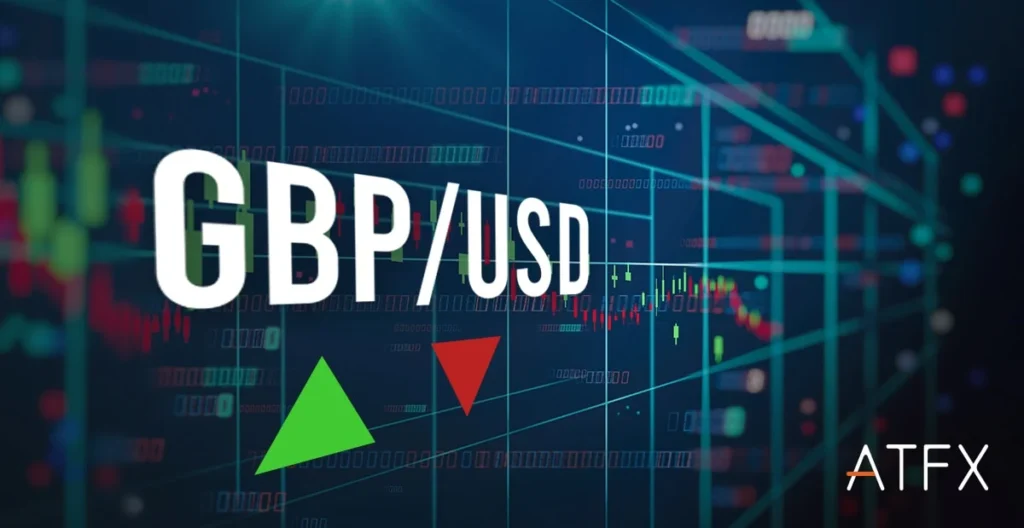
GBP/USD Long Term Forecast
For long-term GBPUSD forecast, macroeconomics is more reliable than technical analysis. Technical analysis looks at past events and tries to predict similar future patterns, but it doesn’t consider other factors that have a great impact on the pair like factors affecting importers, exporters, investors, or decisions of central banks. On the other hand, macroeconomists analyze these factors to predict the GBPUSD long-term outlook accurately.
GBP/USD Short Term Forecast
For short-term GBPUSD forecasts, technical analysis provides accurate price levels for managing positions and predicting. On the contrary, macroeconomic analysis is better for long-term trends but finds it hard to set short-term price targets, often aiming for quarterly or yearly goals without exact timing.
However, short-term traders must monitor the economic calendar weekly for major macroeconomic events, as the events can cause spikes in GBPUSD market volatility almost weekly.
GBP/USD Technical Analysis
There are various ways of trading with the help of technical analysis, so in this article, we will limit ourselves to one, very powerful trading pattern: the rectangle.
At its core, the rectangle pattern is when the GBP USD pair is trapped by a well-defined price floor, and a well-defined price ceiling, the former is called support, and the latter is called resistance. Say that the price of GBP USD bounces from 1.15 several times in May, and June, and is also capped by 1.17 in the same months. As you can see, the support comes in at 1.15 and that resistance is at 1.17. The difference between these two levels is 0.02.
If the GBP USD would trade below 1.15, then that would place all buyers in May and June at a loss, and they would probably close their position just below 1.15 to minimize their losses. This means that when the price trades below 1.15 the selling pressure will be higher than the buying pressure and the price will decline.
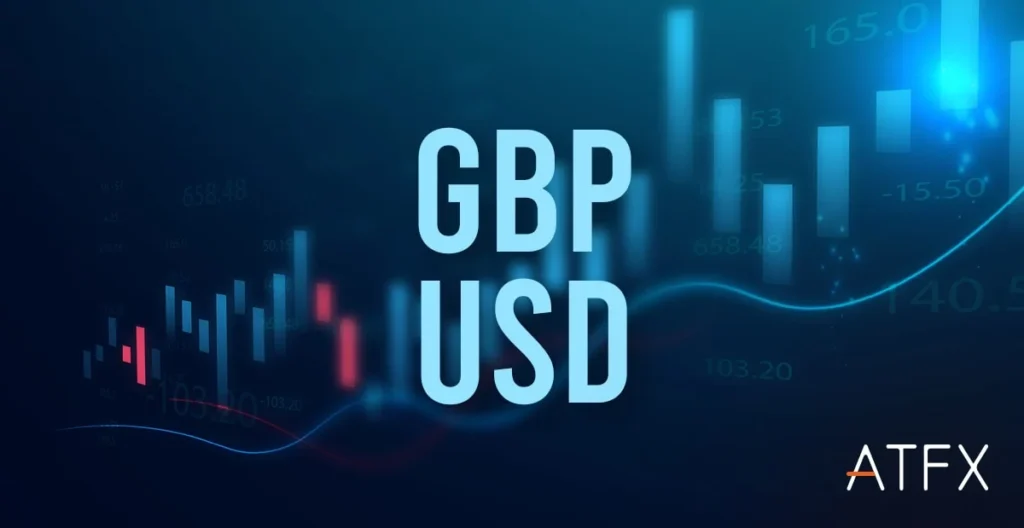
How much could the price decline? Per the rectangle pattern, the difference between the support level at 1.15, and the resistance at 1.17, is subtracted from the support level, which means that the price could reach 1.15 – 0.02 = 1.13, a drop of 200 pips. If the price would trade above 1.17, we would instead assume that the price would reach 1.19. Trading when the price breaks the support or resistance levels is called breakout trading and is probably the easiest way to trade as it is clear what one should do when the price breaches the range.
How to analyze the GBP/USD chart?
Armed with the rectangle pattern you can look for this chart pattern in the various time frames like the five-minute chart if you are interested in short-term trading, or maybe the four-hour or daily chart for longer-term trading. In general, the smaller the time frame such as the five-minute chart, the higher the risk that the pattern will not work well. The same chart pattern on the daily GBP USD chart is probably the most reliable. and now you have a way to analyze the GBP USD chart.
GBP/USD Historical data
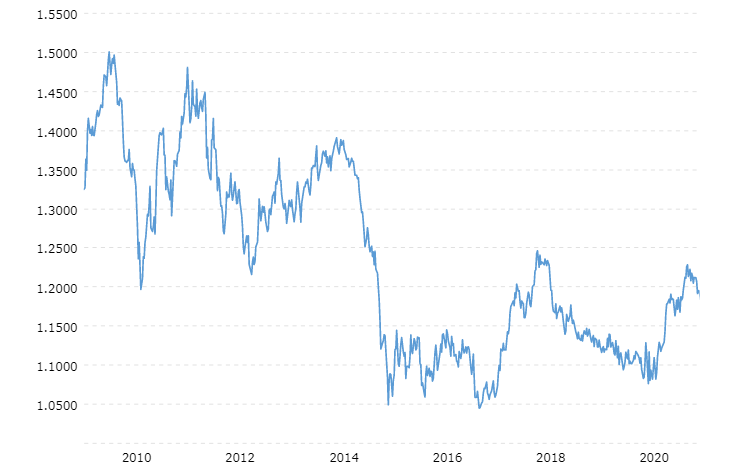
| GBP USD – Historical Annual Data | ||||||
|---|---|---|---|---|---|---|
| Year | Average Closing Price | Year Open | Year High | Year Low | Year Close | Annual % Change |
| 2023 | 1.24 | 1.21 | 1.31 | 1.18 | 1.25 | 3.32% |
| 2022 | 1.24 | 1.35 | 1.37 | 1.07 | 1.21 | -10.52% |
| 2021 | 1.38 | 1.37 | 1.42 | 1.32 | 1.35 | -1.23% |
| 2020 | 1.28 | 1.33 | 1.37 | 1.15 | 1.37 | 3.21% |
| 2019 | 1.28 | 1.27 | 1.34 | 1.20 | 1.33 | 4.04% |
| 2018 | 1.33 | 1.35 | 1.43 | 1.25 | 1.27 | -5.67% |
| 2017 | 1.29 | 1.23 | 1.36 | 1.20 | 1.35 | 9.51% |
| 2016 | 1.35 | 1.47 | 1.49 | 1.21 | 1.23 | -16.05% |
| 2015 | 1.53 | 1.54 | 1.59 | 1.46 | 1.47 | -5.77% |
| 2014 | 1.65 | 1.64 | 1.72 | 1.55 | 1.56 | -6.02% |
| 2013 | 1.56 | 1.63 | 1.66 | 1.48 | 1.66 | 1.84% |
| 2012 | 1.59 | 1.57 | 1.63 | 1.53 | 1.63 | 5.16% |
| 2011 | 1.60 | 1.55 | 1.67 | 1.54 | 1.55 | 0.65% |
| 2010 | 1.55 | 1.61 | 1.64 | 1.43 | 1.54 | -4.94% |
| 2009 | 1.57 | 1.45 | 1.70 | 1.37 | 1.62 | 10.96% |
| 2008 | 1.85 | 1.98 | 2.03 | 1.44 | 1.46 | -26.26% |
| 2007 | 2.00 | 1.97 | 2.11 | 1.92 | 1.98 | 1.02% |
| 2006 | 1.84 | 1.74 | 1.98 | 1.73 | 1.96 | 13.95% |
| 2005 | 1.82 | 1.91 | 1.93 | 1.71 | 1.72 | -10.42% |
| 2004 | 1.83 | 1.79 | 1.95 | 1.75 | 1.92 | 7.87% |
| 2003 | 1.63 | 1.60 | 1.78 | 1.55 | 1.78 | 10.56% |
| 2002 | 1.50 | 1.45 | 1.61 | 1.41 | 1.61 | 11.03% |
| 2001 | 1.44 | 1.50 | 1.50 | 1.37 | 1.45 | -3.33% |
| 2000 | 1.52 | 1.63 | 1.65 | 1.40 | 1.50 | -7.41% |
| 1999 | 1.62 | 1.66 | 1.68 | 1.55 | 1.62 | -2.41% |
| 1998 | 1.66 | 1.64 | 1.72 | 1.61 | 1.66 | 1.22% |
| 1997 | 1.64 | 1.69 | 1.70 | 1.58 | 1.64 | -4.09% |
| 1996 | 1.56 | 1.56 | 1.71 | 1.49 | 1.71 | 10.32% |
| 1995 | 1.58 | 1.56 | 1.64 | 1.53 | 1.55 | -1.27% |
| 1994 | 1.53 | 1.48 | 1.64 | 1.46 | 1.57 | 6.08% |
| 1993 | 1.50 | 1.50 | 1.59 | 1.42 | 1.48 | -1.99% |
| 1992 | 1.77 | 1.87 | 2.00 | 1.51 | 1.51 | -19.25% |
| 1991 | 1.77 | 1.94 | 2.00 | 1.60 | 1.87 | -3.11% |
| 1990 | 1.78 | 1.61 | 1.98 | 1.59 | 1.93 | 19.88% |
| 1989 | 1.64 | 1.82 | 1.82 | 1.51 | 1.61 | -11.05% |
| 1988 | 1.78 | 1.88 | 1.91 | 1.66 | 1.81 | -4.23% |
| 1987 | 1.64 | 1.49 | 1.89 | 1.47 | 1.89 | 27.70% |
| 1986 | 1.47 | 1.45 | 1.56 | 1.38 | 1.48 | 2.07% |
| 1985 | 1.30 | 1.15 | 1.49 | 1.05 | 1.45 | 25.00% |
| 1984 | 1.34 | 1.43 | 1.49 | 1.16 | 1.16 | -20.00% |
| 1983 | 1.52 | 1.62 | 1.62 | 1.42 | 1.45 | -10.49% |
| 1982 | 1.75 | 1.93 | 1.93 | 1.59 | 1.62 | -15.63% |
| 1981 | 2.02 | 2.38 | 2.43 | 1.77 | 1.92 | -19.67% |
| 1980 | 2.33 | 2.24 | 2.45 | 2.14 | 2.39 | 7.66% |
| 1979 | 2.12 | 2.03 | 2.33 | 1.98 | 2.22 | 8.82% |
| 1978 | 1.92 | 1.96 | 2.10 | 1.81 | 2.04 | 6.25% |
| 1977 | 1.75 | 1.70 | 1.92 | 1.70 | 1.92 | 12.94% |
| 1976 | 1.80 | 2.02 | 2.03 | 1.57 | 1.70 | -15.84% |
| 1975 | 2.22 | 2.33 | 2.43 | 2.02 | 2.02 | -14.04% |
| 1974 | 2.34 | 2.30 | 2.44 | 2.17 | 2.35 | 1.29% |
| 1973 | 2.45 | 2.35 | 2.58 | 2.31 | 2.32 | -1.28% |
| 1972 | 2.50 | 2.55 | 2.64 | 2.33 | 2.35 | -7.84% |
The GBP USD exchange rate history shows how the exchange rate between the British Pound, and US Dollar has evolved over time. Some people also call it “GBPUSDhistorical.”
We can use the data per the above table to perform technical analysis. We can see that the worst year since 2013 was in 2016, the GBP lost 16.05%, this was when the UK opted to leave the EU. Whilst the best year was in 2017 when the British Pound gained 9.51%, probably as a reaction to the prior year’s outsized loss. We, therefore, have a rough idea with the help of the data above what to expect from the GBP USD information of gains or losses.
What affects the GBP/USD exchange rate ?
Interest rates
The cost to borrow or lend money is a key factor for currency traders. As an example, if you have 100,000 to invest, would you deposit your money with a UK bank that pays a 3% return per year or with a US bank that pays 1% per year? If there are no differences in the offers or risks of each bank, then the rational option is to place your 100,000 with a UK bank, as you will receive a higher return.
High interest rates are also a symptom of high economic growth and or high inflation. High economic growth is good, whilst high inflation, the erosion of the value of money is not good.
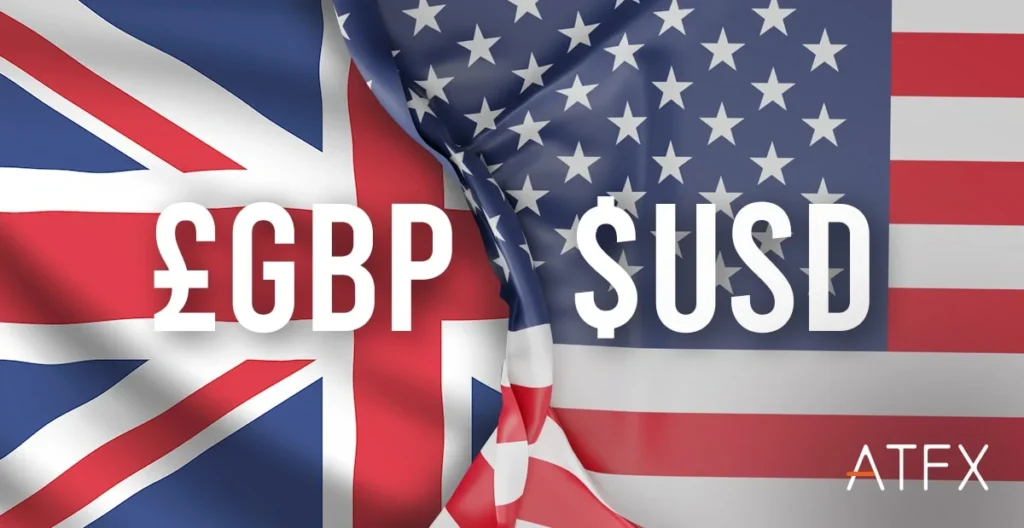
Economic growth
When economic growth is high in a country, interest rates, which are the cost of borrowing money, tend to rise as the competition to borrow money increases. As an example, Euro area interest rates have been low for a long time as the economic chances to invest are low, and as inflation is low. Whilst in many emerging markets, where there are a lot of opportunities to make business, more people will be interested to borrow money, and hence boost interest rates in that specific country.
High-interest rates will therefore attract money that would like to lock in the high returns with the banks. But also people that would like to invest in the country.
Inflation
High inflation means that the value of money is dropping, and that can discourage investment.
High economic growth and high interest rate tend therefore to attract capital flows, and that will boost the value of a currency. Whilst inflation will have the opposite effect. When investors invest in a country and its currency, they tend to look at relative economic growth, inflation, and interest rates and invest in the best-performing country.
GBP/USD Trading Hours
The GBPUSD forex market opens from Sunday, 17:00 EST, to Friday, EST, and is run by most brokers like ATFX. Trading with no significant economic news released, prices remain stable, and few traders participate, choosing time off instead.
GBP/USD Trading Sessions
GBP/USD forex trading operates from Sunday to Friday in New York Time (EST), with peaked volume during European business hours.
The Japanese banks usually wait until afternoon for London and Frankfurt to come online before making their exchanges, thus the London foreign exchange sees a lot of trade activity and is the busiest at this time. Around midday, London time, New York traders join as it is morning on the East coast and the highest amount of GBP USD is traded. After 17:00 London time, trading volumes have already started to dwindle. But trading remains open as the US traders are still at their desks and will be joined by Asia once more.
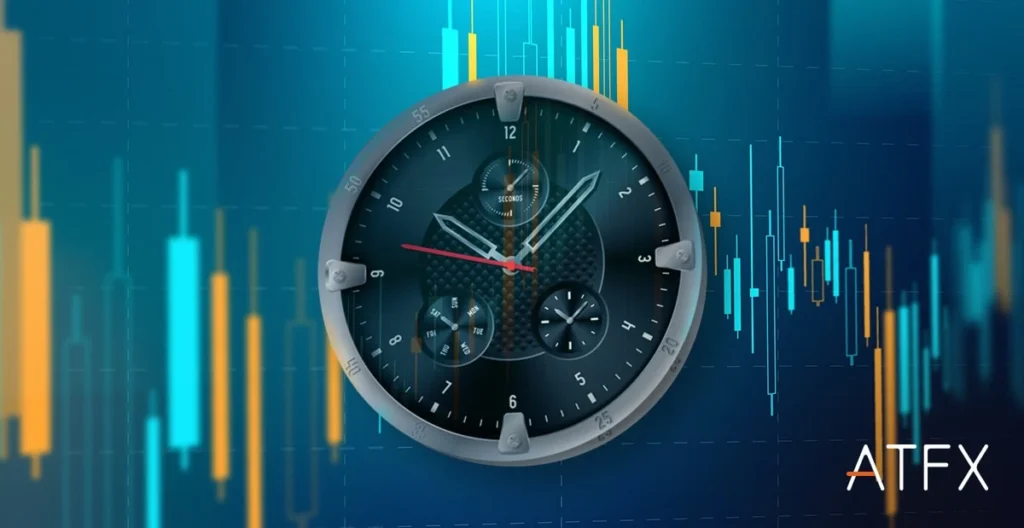
Trading adapted for high volatility
As trading is muted during the Asian trading session, most prices tend to remain in narrow price ranges. This means that GBP USD traders will do better using range bound trading strategies during the Asian session.
A range-bound GBP USD strategy means that we sell when the price reaches resistance and buy when the price reaches support levels. Also, because the price changes are small, people adapt and try to make many small profits. To make it profitable to make money on small price changes, brokers like ATFX offer leverage, that way a small percentage change can be multiplied, e.g. a 0.1% change can be turned to 1% change, 10% or higher. But at the same time, it is important to understand that high leverage could also hurt you if the price turns against you. This is the reason ATFX as a broker offers keen traders free courses and trading tools focussed on optimized control and risk management.
As the European business session tends to see the biggest trading we tend to see the break to the Asian trading ranges. For example, GBP USD might trade between 1.15 and 1.16 most of the Asian session, but as London and Frankfurt join the price will likely try to break the 1.15 support level and try to reach 1.14, or break 1.16 and try to reach 1.17.
Certain types of traders tend to find breakout trading appealing and therefore use breakout systems during this GBP USD trading session. A breakout strategy means that they buy when the price breaches a prior high, with the anticipation that the price will keep on gaining. If GBP USD breaks down, they will short-sell, that is to bet on the price to keep on dropping, when the price slides below support levels.
In summary, the European session is the most active trading session, and most see it as the best time to trade the GBP USD, but in the end, it depends on each person’s personality and trading strategy, but also the ability to trade. As an example, it would be hard for a Japanese trader to stay awake each night to trade the European session. The best months to trade GBP USD are non-summer months as market volatility tends to be low during the European summer. With ATFX you can trade Sunday to Friday and enjoy low spreads throughout all sessions.
How to trade or invest GBP USD like a pro?
3-Simple-Steps
1. Derive a trading strategy
Developing a GBP/USD trading strategy is important for knowing when to buy, sell, take profits, and cut losses. Test it first on a demo account, but real market experience is essential for refining and making it profitable with a reliable broker and platform.
2. Derive an optimal betting strategy
You cannot rely only on having a trading strategy; determining how much to risk per trade is important to avoid draining your capital before a strategy pays off. Many new traders oversize their bets, but professionals typically risk no more than 1.5% of their capital per trade. A reliable trading platform can assist in swiftly calculating your risk per trade.
3. Implement and stick to your trading strategy
People often switch trading systems due to distrust in their strategy. To build confidence, research your GBPUSD strategy carefully and start with low-risk real trades. Begin with a demo account, but trading real money accelerates learning as it encourages quick decision-making.
Why trade GBP USD with ATFX?
Competitive Spreads
24/5 Forex Trading
Trade 40+ Currency Pairs
Zero Commission
FAQ
It is the exchange rate between the British Pound and the US Dollar.
The Norwegian Krone is the world’s strongest currency.
GBP SGD (GBP vs. Singaporean dollar) has a high correlation to GBP USD.
This depends on where interest rates, inflation, and economic growth is the highest, as it stands in late 2021, it looks like the GBP USD rate trends lower as the US economy outperforms the UK.
The GBP SGD, USD CNH, and USD CZK.
Trading in GBP USD starts with most brokers on Sundays at 17:00 EST (New York time) and ends on Friday’s at 17:00 EST.
That is a signal (indication) to buy or sell the GBP USD. Signals are usually issued by independent traders via social media.
It depends on the relative performance of the UK vs. US economies.
In the 1930s the GBP USD rate reached briefly above 5 dollars per pound. But since then the exchange rate has declined as the influence of the UK economy and the country as a superpower has declined. Instead, the USA has risen as a superpower.
You would need to multiply your lot size with the exchange rate. There are three typical lot sizes: 1000 units, 10,000 units, and 100,000 units.
COT stands for “Commitments of Traders” and it is a weekly report showing how traders of GBP USD futures are positioned.
This is the GBP USD exchange rate vs. the price of gold.
Say that GBP USD trades from 1.1510 to 1.1511 then you have made one pip in profit. If you bought 10,000 GBP vs. the USD at the above-mentioned prices then you would have made 1 USD, because 10,000 x 1.1511 = 11511, and 10,000 x 1.1510 = 11510, and $11511 – $11510 = 1 USD.
To be able to make money trading GBP USD we need to have market volatility, this means that there are price movements. Traditionally, summers will be quiet as traders are on holiday so avoid June, July, and August if you would like to avoid months with low market volatility.
The best time to trade EUR/USD is when news releases come out or when economic indicators come out and when a major central bank decision is anticipated. You will find volatility increases during these hours. The busiest time zone is between New York and London by volume.